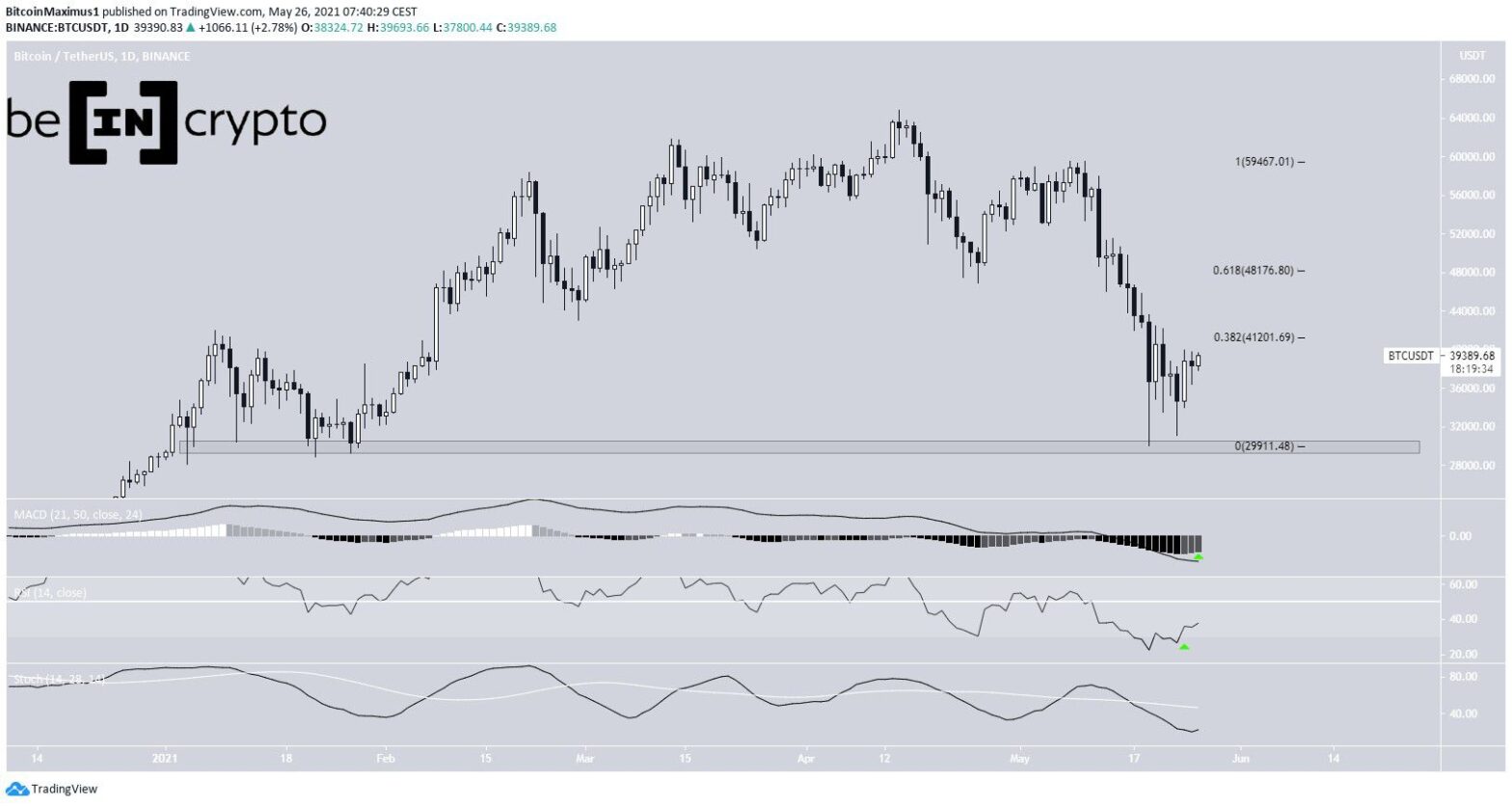This article on commodity inflation in 2021 is the opinion of Optimus Futures.
- There are many opinions and theories circulating around the media space as to the nature, origins, and duration of the current inflationary surge.
- When trading commodity futures, it is important to distinguish what type of inflation is taking place.
- To take advantage of monetary inflation, you have to constantly keep your eye on certain fundamental indicators and markets in order to anticipate inflationary turns in the market.
The Crux of the Debate: Transitory or Long-Term?
If you pay close enough attention to it, you may find that inflation talk has split into different factions. Some view it as a supply chain issue. Some view it as a monetary issue. Some say neither are relevant unless the money velocity picks up–an argument that typically ends up pointing the fingers at Congressional spending (the argument of “free money” stimulus tsunami chasing fewer goods causing demand and price spikes).
But one thing for sure is that the entire debate rests on one thing: is inflation going to be a “transitory” phenomenon, as Fed chief Jerome Powell claims–meaning, all is working according to plan–or is the current inflationary effects merely laying the groundwork for a deeper and more prolonged inflationary environment, not unlike what we all experienced in the Swinging 1970s?
Commodity Inflation 2021
To get a clearer picture of where we are now, let’s take a look at how we got here:
Bloomberg Commodity Index Futures (AW): Black
Deutsche Bank Agricultural Fund (DBA): Green
Deutsche Bank Base Metals Fund(DBB): Blue
Silver Futures(SI): Silver
Copper Futures (HG): Red
Gold Futures (GC): Gold
Weekly Chart 2014 – 2021
The Bloomberg Commodity Index is energy-weighted, and we know how energy prices have been sinking for years, only to pick up in 2020 as economies, thanks to monetary and fiscal stimulus, began efforts toward revving up to recovery.
Agricultural prices (DBA), specifically in the US (as the United Nations world food index paints a different picture) also fell until Covid quarantines disrupted the supply chain flow. Along with the shortage came the price spikes, as people still had to eat.
Now here is where it gets interesting. Notice the base metals index (DBB). It began rising in 2016. Two years later, it pulled back, only to skyrocket in 2020, like all other commodities amid the pandemic, with copper nearly topping most other commodities.
The spread between silver and gold widened in 2019–the gold/silver ratio hitting 5,000 year high in 2019–only to contract, And while gold outpaced all of the commodities above, silver’s rise was significantly sharper. So, what happened?
The main point here is that we’re looking at “inflationary effects” caused by different factors–namely, supply chain and monetary factors. This is important because if you want to learn how to exploit or hedge against such movements, you have to be aware of the larger economic factors that potentially caused these prices to move.
What’s the Relationship Between Inflation and Commodity Prices?
Inflation is the decline of purchasing power over time due to an increase in the average price level of a given product or set of products.
There are generally three kinds of inflation:
- Demand-Pull Inflation: when the demand for certain goods and services outpace their supply (e.g. supply chain disruptions and bottlenecks, as what we’re seeing now, is part of this inflation category).
- Cost-Push Inflation: when production costs are transferred to consumer product costs (e.g. we’re also seeing this today as copper prices, constructional material costs, and other commodity-driven “input costs” are finding their way into the product end of the market).
- Built-In Inflation: when the overall cost of living causes wages to increase; a systemic and largely “monetary” problem at this point.
The relationship between a commodity’s price and any supply chain disruption that may impede delivery at a time of high demand is straightforward. It’ll likely go up for as long as it is less available. When DarkSide hacked the Colonial Pipeline’s computer network, gasoline prices shot up in the East Coast and other areas. That’s inflation due to a direct supply disruption.
Supply chain related inflation often can’t be predicted, and some, like the Colonial Pipeline case, may not have a long-term effect on a given product, in this case RBOB gasoline futures, though it had a temporary effect on gas prices at the pump.
Monetary inflation is a different monster. Some economists will argue that inflation begins at the Money Supply level; inflate the money supply and inflation will eventually make its way to costs of goods and services.
Other economists will argue that it’s not so much the money supply as it is “money velocity,” as in the speed by which $1 multiplies as it changes hands through multiple transactions. Which commodities best respond to this type of inflation? That’s what we’re about to cover next.
Assets That Do Best During Periods of Monetary Inflation
When people speak of inflation, they’re often referring to longer-term monetary inflation, the kind that originates from monetary and even fiscal policy–specifically, the money printing and fiscal spending that reduces the value of the dollar, inflates the national debt, and crushes purchasing power.
As you probably know, one of the most traditional hedges against inflation are gold and silver, both of which once backed the US dollar when it was pegged to a Gold Standard. Let’s take a look at each one.
Gold – The Monetary Safe Have Par Excellence
The yellow metal has at least a 2,000 year history as one of the most valued, if not the most valued, monetary asset since the dawn of civilization.
Gold may not be considered a “legal tender” asset in the US, but it’s still valued as “sound money.” In fact, central banks across the globe have been accumulating the metal at record amounts since Nixon put the axe to the Gold Standard in 1971.
The point being–gold is still money. And for that very reason, the monetary metal remains a popular safe haven against inflation.
More importantly, gold is like a canary in the coalmine: it indicates early on the inflationary or stock market fears of early movers, some of whom make up part of the so-called “smart money.”
So, what did gold’s movement tell us before and during the pandemic?
Gold Futures – Monthly Chart – June 2018 to May 2021
Gold’s rise began well before the Coronavirus pandemic. After a series of rate hikes, the Fed, in December 2018 as shown at [1], promised to stop raising rates. Note the Fed was under heavy criticism by the former President Trump who kept publicly pressuring the Fed to lower rates in order to spur economic growth.
This may have sent an early warning signal to gold investors who sensed that the Fed was no longer unwinding its balance sheet. The Fed funds rate stood at 2.5%.
In August 2019, shown at [2], the Fed lowered rates to 2.25% despite economic growth. Gold, having broken above a three-year resistance line at 1,377, is now clearly trending upward, anticipating further easing in monetary policy.
In March of 2020, the Fed responded to the Covid lockdown by lowering rates to 0.25%, effectively at zero. The price of gold continued trending upward until it reached the price of 2,089 an ounce, pulling back afterwards.
Right now, with the Fed funds rate still near zero, investors seeking safety are flocking to gold as a potential hedge just in case the supposedly “transitory” inflation surge turns out to be a much higher, longer-term, and systemic issue.
Silver – A Hybrid Monetary+Industrial+Renewable Energy Metal
Silver occupies a unique spot. It’s a precious metal for sure, and definitely a monetary metal, like gold’s second. But it’s also an industrial metal, and now, a critical component to solar and other renewable energy tech developments.
Here’s something you should know, whether you’re a short-term trader, long-term investor, or whether you’re just looking to hedge your portfolio: according to a Silver Institute study, silver demand for printed and flexible electronic materials has surged from just under 10 million ounces (Moz) in 2010 to a staggering 48 Moz in 2020.
The trend in electronics and renewable energy demand doesn’t look like it’s going to end anytime soon. And President Biden’s infrastructure plan, it seems like it’s only going to increase from here on.
Perhaps that’s what we’re seeing below:
Silver Futures – Weekly Chart – September 2019 to May 2021
So, when you think of silver having more than doubled in 2020, it behooves you to ask how much of this surge was due to monetary demand–as a hedge against inflation–versus industrial demand. It’s likely a hybrid of both, and that is what makes silver a unique commodity–it occupies both the monetary and industrial worlds as a multi-environmental “return source.”
Is Your Portfolio Prepared for Inflation?
There are many ways to diversify your portfolio in order to hedge it against inflation risk.
Gold and silver are two commodities that tend to move inverse to inflation; when one goes up, the other is likely going down over time. Note that this relationship isn’t mechanical; it doesn’t move in lockstep.
What about bitcoin? Right now, bitcoin (along with other cryptos) is a popular, albeit extremely volatile, asset. There is no fundamental reason to think that bitcoin is an inflation hedge aside from the “belief” that it is. It has no track record. It isn’t a widely adopted currency. And it certainly is too prone to volatility to be considered a reliable store of value. It’s a speculative asset. So, we’ll leave cryptos out of the inflation discussion for now.
One somewhat popular model of all-weather investing is Harry Browne’s Permanent Portfolio theory. The formula is quite simple: 25% stocks, 25% long-term Treasuries, 25% cash, and 25% precious metals.
There are many variations to this portfolio (for example, dropping the cash allocation to add more bonds). And right now, bonds don’t yield much due to the Fed’s interest rate suppression. But if you want to participate in every possible asset class rally, this is a model that’s worth looking into for the long run.
The key commodity here is “sound money”–in short, gold and silver.
When inflation plagues the economy, the value of fiat money erodes. The cost of goods and services rises.
Stocks may outpace inflation but it depends on whether a company can maintain or increase revenue and earnings despite inflation dampening consumer demand or despite “input costs” that erode company profits. You also can’t accurately target inflationary versus dis-inflationary stock sectors using US index futures.
You’d have to enter the equities market and pick stocks one by one or find a theme-based exchange traded fund.
What about bonds? Bonds yields are often already at low levels, and any fixed-income will likely be eroded by the inflation rate. TIPS may also be subsumed by the inflation rate, in which you’d be receiving negative “real yield.”
Hence, gold and silver are the only players left in the game. They’re not “perfect,” but again, what other “monetary” commodities might you have. Other physical commodities may rise as well, but as the Bloomberg Commodity Index and Agricultural Index (DBA) above has shown, they’re trailing far behind gold, silver, and copper.
Not all commodities are responding as strongly to the “reflation” trade, infrastructure spending, and renewable energy tech development.
It’s situational, hence it takes some active research work to stay on top of things. No cookie cutter solution here. Sorry.
How Can I Profit From Inflation?
We’re going to limit this discussion to monetary inflation rather than any inflationary effects due to supply disruptions.
The reason for this is that sudden supply shocks are often unpredictable, and when they occur, the situation is often reliant on technical setups. If a supply disruption indicates a longer-term issue, then you’ll have to understand the fundamentals driving the price surge. We don’t need to discuss this, as the steps are pretty obvious–namely, follow the news and trade (or “tread”) carefully.
Now, if you’re looking to profit off monetary inflation, say, by investing in gold and silver, then the #1 rule is to pay attention to the big picture.
M1 Money Supply
- A precious metals trade would have been following the M1 Money Supply. There are those who believe inflation is a monetary phenomenon. Some theories point specifically to money supply inflation as the biggest predictor of inflation in the economy.
Producer Price Index
- Are you following the Producer Price Index (PPI)? Higher input costs can often have the effect of reducing company revenues. Oftentimes, when increasing input costs are sustained, companies will often raise prices to help cover the cost of goods and services. In April, the PPI rose 6.2% year over year, the highest PPI jump since 2009.
Consumer Price Index – 1947 to 2021
If you were to look at the CPI from 1950 onward, you can see the slow and constant decline of the dollar’s purchasing power. But let’s take a look at the CPI as to what it’s telling us today.
Consumer Price Index – October 2018 to May 2021
The effect of monetary inflation on consumer goods and services should be pretty evident. And if you were paying attention to current CPI reports, April’s inflation rate saw a spike of 4.2% year over year–the biggest CPI headline gain since September 2008.
Even if you take food and energy prices out of the equation, we’re still looking at a 3% year-over-year surge. This, among the other indicators, is yet another canary in the coalmine scenario.
Three-System Warning for a Potential Stock Index Correction
No system is error-proof, yet here’s one way to exploit potential downside opportunities–namely, shorting the Dow, S&P 500, or Nasdaq futures.
Look at the VIX, government bonds, and gold. If all three are moving higher together, then it may be signaling a downturn in US stock indices.
Why? Common sense. These three indicate market fear sentiment and a flight to safety.
The Bottom Line
Commodity futures may be uncorrelated with the stock market, and as you’ve probably heard, a bullish mega-trend in commodities may have already begun, gaining steam in 2021.
But the link between commodities and inflation will vary by commodity and type of inflation. So, if you want to take advantage of the inflationary environment using futures, the only viable strategy is to pay attention to the big picture and all of the indicators that can help you gauge the direction of “purchasing power”–the rate at which it is decline, the likely duration of its decline, and why it’s declining in the first place.
Disclaimer: There is a substantial risk of loss in futures trading. Past performance is not indicative of future results.
Source: https://optimusfutures.com/tradeblog/archives/how-to-trade-commodities-during-inflationary-periods/%20- "
- 000
- 2016
- 2019
- 2020
- 2021
- active
- ADvantage
- All
- allocation
- among
- April
- around
- article
- asset
- Bank
- Banks
- BEST
- Big Picture
- Biggest
- Bitcoin
- Bloomberg
- Bonds
- Bullish
- business
- Cash
- caused
- Central Banks
- chief
- Commodities
- commodity
- Common
- Companies
- company
- component
- consumer
- contract
- cookie
- Coronavirus
- Coronavirus pandemic
- Costs
- Covid
- Currency
- Current
- debate
- Debt
- delivery
- Demand
- Development
- DID
- Disruption
- Dollar
- dollars
- dow
- driving
- Early
- Earnings
- easing
- east coast
- eat
- Economic
- Economic growth
- economy
- Electronics
- ends
- energy
- Environment
- exchange
- Exploit
- eye
- fears
- Fed
- Fiat
- Fiat Money
- First
- flight
- flow
- follow
- food
- fund
- Fundamentals
- funds
- future
- Futures
- game
- GAS
- Gold
- goods
- Government
- Growth
- here
- High
- history
- How
- How To
- HTTPS
- Hybrid
- Increase
- index
- industrial
- inflation
- Infrastructure
- interest
- investing
- investor
- Investors
- IT
- jerome powell
- jump
- Key
- LEARN
- Level
- Line
- LINK
- lockdown
- Long
- Mainstream
- March
- Market
- Markets
- materials
- Media
- metal
- million
- model
- money
- move
- Nasdaq
- Near
- network
- news
- Opinion
- Opinions
- order
- Other
- pandemic
- Pay
- People
- performance
- picture
- policy
- Popular
- portfolio
- power
- Precious Metals
- president
- president trump
- price
- price surge
- producer
- Product
- Production
- Products
- Profit
- pulling
- raise
- rally
- Rates
- recovery
- renewable energy
- Reports
- research
- Results
- revenue
- Risk
- Run
- S&P 500
- safe
- Safe Haven
- Safety
- Sectors
- sense
- sentiment
- Series
- Services
- set
- Short
- Shorting
- Silver
- Simple
- So
- solar
- Space
- speed
- Spending
- split
- Spot
- spread
- stay
- Steam
- stimulus
- stock
- stock market
- Stocks
- store
- Strategy
- Study
- supply
- supply chain
- surge
- system
- talking
- Target
- tech
- Technical
- temporary
- time
- tips
- top
- track
- trade
- trader
- Trading
- Transactions
- trending
- trump
- United
- united nations
- us
- US Dollar
- value
- valued
- VeloCity
- Versus
- View
- Volatility
- weekly
- WHO
- Work
- world
- worth
- year
- years
- Yield
- zero











